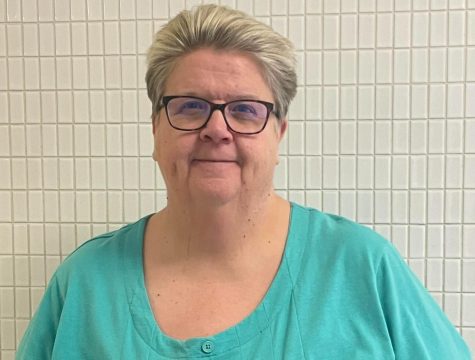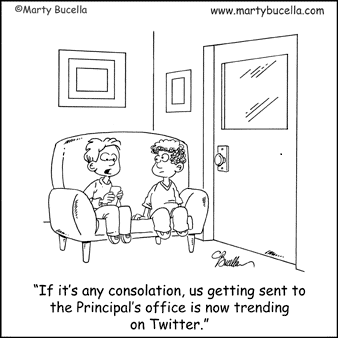Creating a Safe Space for Them
Attitudes about preferred pronouns and genders
May 13, 2022
Many students do not identify with the name on a teacher’s class roster and prefer to be addressed with different pronouns and preferred names. When teachers honor a student’s preferences, it can create a safe environment for them.
“Some teachers won’t let you use your chosen name. Last year only a handful of teachers used my chosen name, and this year only one teacher hasn’t used it. I won’t name them by name, but it’s bothersome,” said Michael Miller, a sophomore at LHS.

Max Flagg, a freshman at Lancaster High School, said teachers and other students should be aware that making assumptions about a student’s gender can be frustrating and hurtful.
“Things teachers and students who are mindful enough can do to help is to memorize the name someone goes by and ask for pronouns instead of just assuming and never fixing the name-calling,” Flagg said.
“I think just being respectful of pronouns and names, and shutting down other students’ nonsense is good. Also, not outing people to their parents if they aren’t already out! I don’t know if anyone has or not, but I feel like I should mention it. It’s helpful to just listen and be there for your students, not make their home life worse by outing them!” said Miller.
LHS sophomore Winter Winslow and Miller both explained that when teachers show that they are trying to acclimate to a student’s preferred gender and pronouns, it sets an example for the whole class.

“When a teacher makes any kind of an effort to make me feel safe it’s the best thing in the world,” said Winslow.
“When it comes to teachers respecting pronouns and names, it makes me so happy! It makes me enjoy going to that class, and try to work hard instead of losing interest and not doing anything. Teachers who make that effort are great and lovely teachers!” said Miller.
According to Penn State University, using language to avoid incorrectly addressing a student is one of the easiest and most effective strategies.
“Avoiding gendered language is one of the easiest ways to avoid misgendering students. Instead of saying “boys and girls” or “ladies and gentlemen” try “folks” or “everyone.” Instead of “guys,” try “y’all.” Don’t address a student as “Mr. or Ms” Just say their name.”

LHS Latin teacher Chelsea Durdel said she admires students for standing up for their preferences.
“I try to show my respect and kindness to anybody that comes in regardless of their differences to me. So if you have a preferred name that you go by, it doesn’t bother me, it doesn’t change my life that you have a preferred name. That’s fine, I can use it, I can show you that respect,” Durdel said.
LHS Choir teacher Sandy McCoy said it is important for her students to feel accepted, heard, and included in her classroom environment by having a preferred name and pronouns.
“Students going by preferred pronouns, and preferred names is definitely not something I had experience with as a young teacher. It was a challenge for me to get used to. But I think everyone deserves to feel respected and accepted, so it’s important to be open to ideas that are new to you,” said McCoy.

Many times students are hesitant to say their preferred name or pronouns for fear of rejection, embarrassment, and judgment from the teacher and students around them.
“I can list three people that hate me for not acting like my XY chromosomes off the top of my head. A huge problem is that my record shows Ashton as my name, not Winter. Being who I am, people are going to assume my gender. That’s just going to happen,” said Winslow.

Miller agreed with Winslow and said that he realizes people just assume his preferred gender.
“So, the challenges I face are trying to pass as a guy. I’m a demi boy, which means I prefer he/they pronouns. Trying to pass, for me, is hard, since some kids will still call me a female and it’s just hard to get pass,” said Miller.
As a simple solution to help quickly identify how a person wants to be identified, Winslow suggested a simple ID bracelet.
“I have three, with each set of pronouns, she/her, they/them, and he/him. If everybody used them then nobody would have to make assumptions anymore. Nobody would need to feel inhuman because they were misgendered by somebody who didn’t know,” Winslow said.
McCoy explained the strategies she uses on a day-to-day basis to make her students feel welcomed and safe in her classroom.
“I try to communicate with each student as best as I can. I try to get to know them by talking with them and listening to them. I want them to trust that I respect them and would never intentionally hurt their feelings,” she said.
No matter one’s preference, feeling safe and respected is something that all students want.
“A safe classroom to me looks like a place where everybody is happy with each other. There are no petty rivalries,” said Winslow.
“A safe classroom should be accepting no matter the gender, looks, names, and pronouns and even in cases of internalized homophobia and sexuality between students,” said Flagg.












